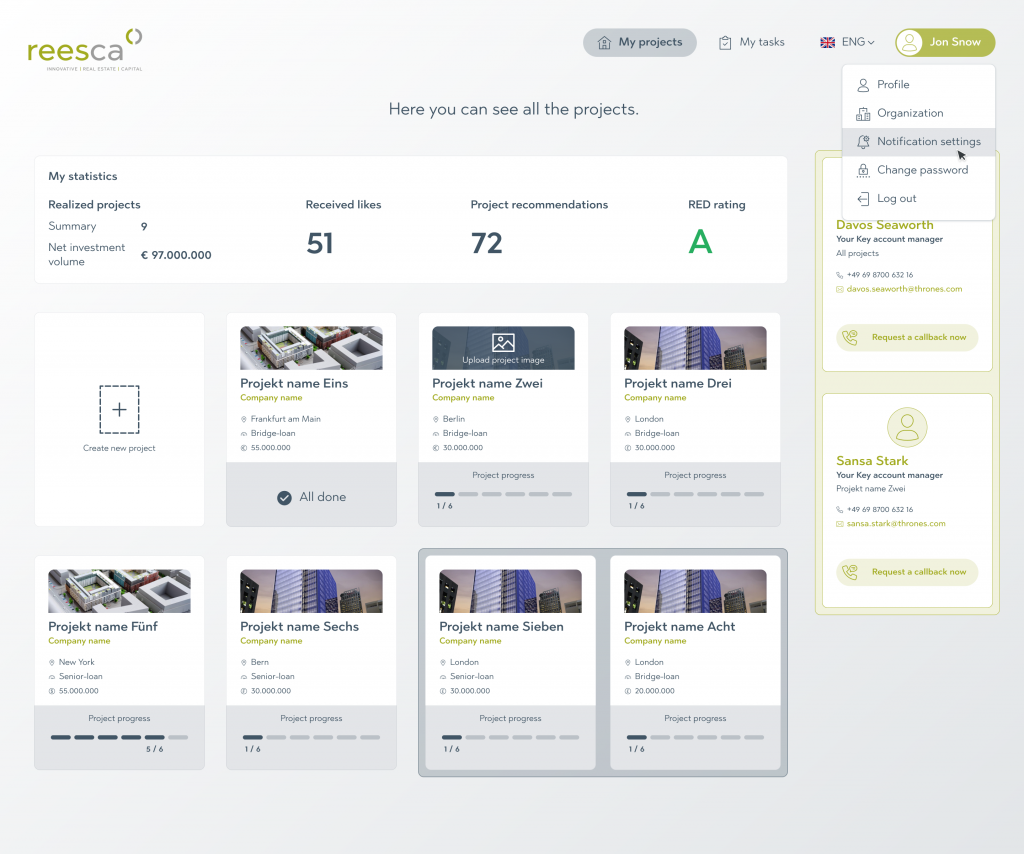Introduction
Cloud computing, simply put, is the delivery of computing services. That includes servers, storage, databases, networking, software, analytics, and intelligence over the Internet (“the cloud”) with a clear goal of enabling faster innovation, more flexible usage of resources and economies of scale. You typically pay only for the cloud services you use, which consequently helps to decrease operating costs, helps to run the infrastructure more efficiently, and scale according to the current needs of your business. Another benefit of cloud is low requirements for pre-investment (it is not necessary to invest in the purchase of HW at the beginning of the project, but it is spread over time).
We provide our customers with cloud consulting services, cloud infrastructure services, cloud application development and cloud application migration services. On top of that we are active in the field of IoT (Internet of Things).
Our cloud migration service can help you move towards digital business operations in the cloud. Migrating your in-house servers including services & applications running on them to the cloud can provide you with several cutting-edge advantages for your business. It is however very crucial to perform the transition properly and according to the specific requirements. As every business has different needs, we also follow a slightly different process for each individual cloud migration.With our cloud-native development, we help you to build and run applications that fully exploit all advantages of the cloud computing model. Our cloud-native computing service uses: open-source software stack to be containerized, dynamically orchestrated and microservices-oriented.
Cloud consulting
Adoption of cloud computing can help you to reduce operational expenses, boost innovation, unlock new possibilities, and realize your strategic IT objectives.
Our cloud consulting service starts with understanding of your current technology landscape, business challenges and goals. We know that our clients have unique needs and are at different levels of maturity on their cloud journey. Therefore we are providing a tailored set of cloud consulting services which support you through your decision-making process and help you to accomplish your business objectives.
Based on the level of the cloud adaption in your company, we can provide following expertise:
Cloud adaption: we ensure that your first steps into public cloud are efficient, smooth and secure. Our experts will help you build a resilient cloud platform.
Migration Assessment: The destination platform could be a public or private cloud infrastructure. We help you to assess the suitability of on-premises machines for migration to cloud. We provide you with correct sizing of VMs (virtual machines) and cost estimates for running infrastructure.
Cloud Optimization: We analyze your cloud infrastructure, detect under- and over-provisioned instances and idle resources, and identify security gaps to remove performance bottlenecks and lower your cloud computing costs.
Cloud strategy: It’s no longer about looking at one application or a specific part of the business, but how to transform your whole company, help it to to develop faster and be more efficient than the competition.
Cloud migration
Our cloud migration service can help you move towards digital business operations in the cloud. Migrating your in-house servers including services & applications running on them to the cloud can provide you with several cutting-edge advantages for your business. It is however very crucial to perform the transition properly and according to the specific requirements. As every business has different needs, we also follow a slightly different process for each individual cloud migration.
Before the cloud migration begins, it is important to establish its goals. The migration goals are individual for every company. For one company it could be an increase of the performance of an application or enabling new services. Other company might expect cost savings or relieving the IT department from application support duties.
The other important concern when establishing cloud migration goals is to agree when the old infrastructure has to be terminated.
After migration goals are agreed on, the company focuses on creating a security strategy. The ultimate objectives for a security of the organization don’t change with the introduction/implementation of cloud services, but the way how those objectives will be achieved is going to be modified. Security teams must still focus on reducing business risk from attacks and focus on getting the confidentiality, integrity, and availability assurances built into all information systems and data. Cloud cybersecurity requires a different approach compared to the on-premises security. In the cloud environment, corporate assets are no longer protected by an on-premise firewall, and the network perimeter basically does not exist.
When a company becomes confident with security assurances, it is time to choose a suitable cloud provider and to copy the data over. This should be done continually throughout the migration process so that the cloud data remains up-to-date. There are many tools which support migration of complete servers as well as the individual databases.
The most complex part of the process is then moving the company application including their business intelligence. This part might involve refactoring or rewriting the code.
After a proper testing and verification, the last step of the process is to switch the production from on-premise to the cloud.
Cloud-native development
With our cloud-native development, we help you to build and run applications that fully exploit all advantages of the cloud computing model
Our cloud native computing uses an open-source software stack to be:
- Containerized: every part (applications, processes, etc.) is packaged in its separate container. This eases the reproducibility, transparency, and resource isolation.
- Dynamically orchestrated: containers are actively scheduled and managed to optimize resource utilization.
- Microservices-oriented: segmentation of the applications into microservices, which greatly increases the overall agility and maintainability of applications.
Among the main advantages of cloud native development belong:
- avoiding high initial costs with pay-as-you-go model. No initial infrastructure investment needed
- reducing the time-to-market with optimized infrastructure setup, CI/CD delivery & deployment
- innovative technology – cloud application platforms are exposed to the latest technology, such as big data, AI (artificial intelligence), IoT (Internet of Things), etc.
- global scale – ability to scale elastically according to the needs. Start small but be ready to grow big
- ensuring high availability & reliability – cloud computing makes data backup, disaster recovery and business continuity easier and less expensive
The main challenges for organizations connected to the cloud native development are:
- optimization of the infrastructure costs
- selection of the perfect technology cloud set-up
- the need of building of DevOps culture












